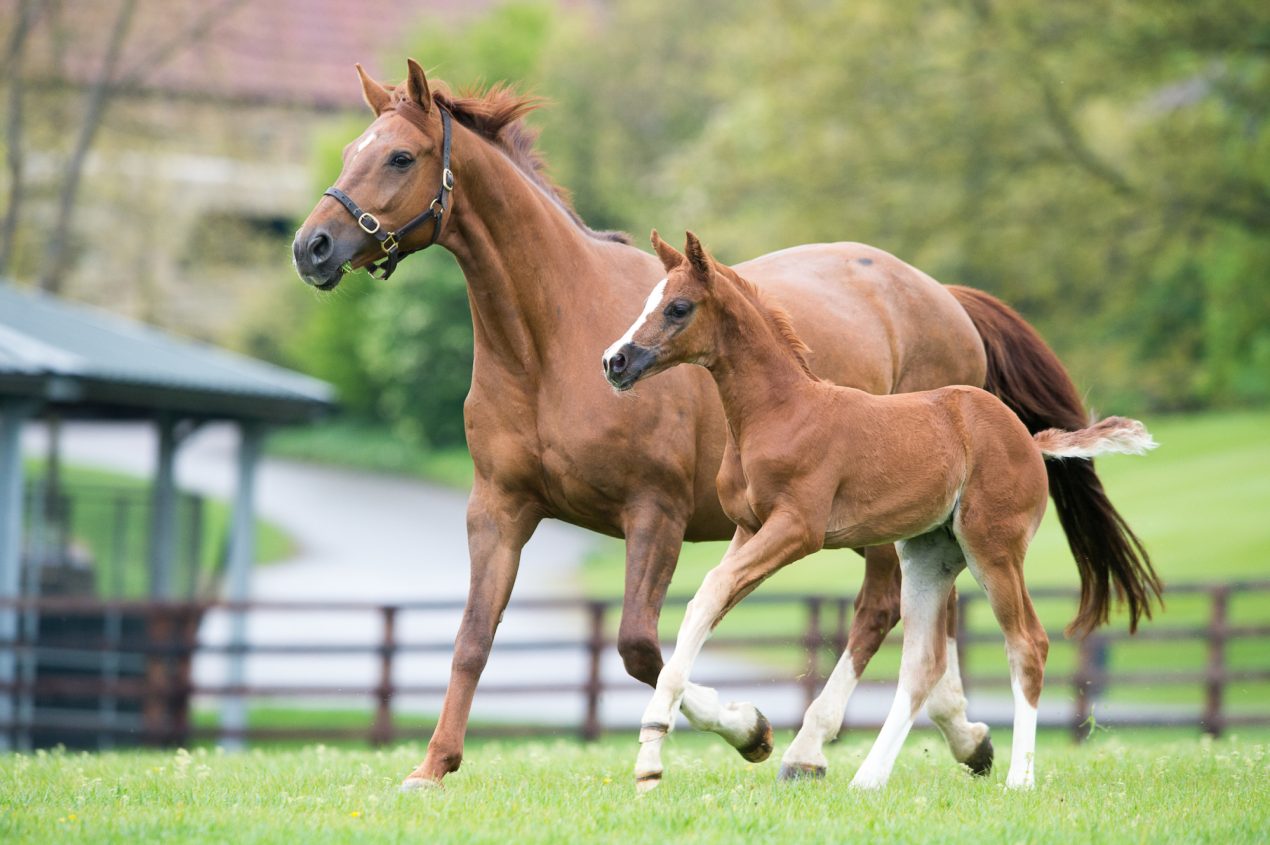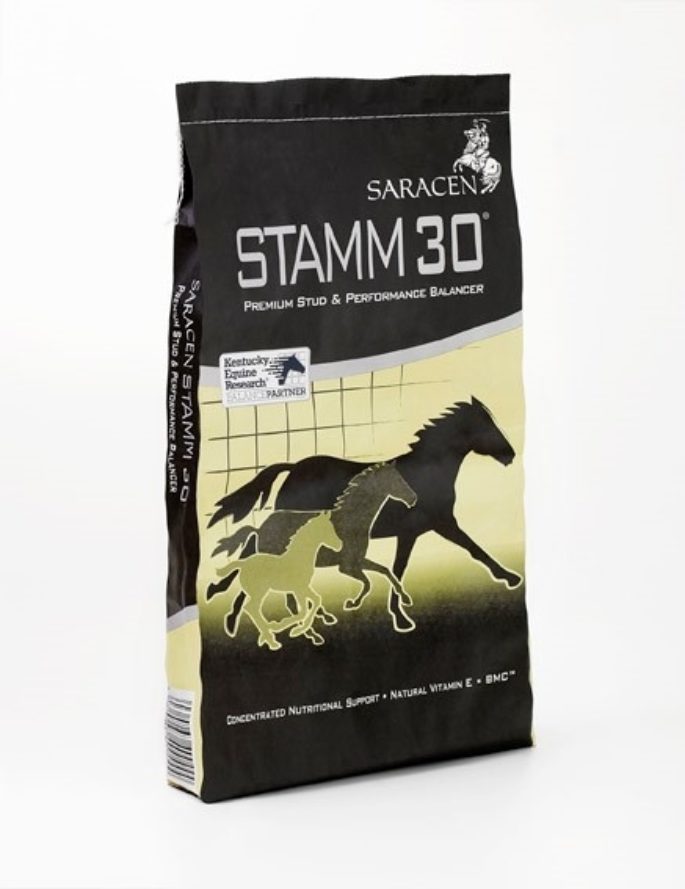Feeding The Weanling

Recent and ongoing research suggests a relationship between the glycaemic nature of feed and the incidence of skeletal disorders, such as osteochondritis dissecans (OCD) in young horses.
High-glycaemic feeds are those that produce a large blood glucose response post feeding, such as cereal grains and molasses. It appears that the normal bone formation processes in young horses are being disrupted by the elevated blood insulin (hyperinsulinemia) concentrations following the consumption of a diet rich in starch and sugars. Weanlings have similar nutritional requirements to yearlings, just with a smaller appetite meaning that their feeds need to be more calorie dense. Having said that, this cohort of horses is at higher risk of OCD and therefore energy intake needs to be carefully monitored.
Introducing a hard feed
Weaning can be a stressful time for young horses and this could lead to a reduction in growth, as well as increased risk of digsetive issues. In order to combat this issue, introducing the foal to an appropriate creep feed prior to weaning will help to increase familiarity with hard feed. This will also help to reduce stress during weaning as there will be no sudden introduction of a bucket feed. As weanlings are likely to have a restricted appetite, it is important that the feed is palatable to ensure that correct intakes are being achieved. Extra care should also be taken to the size of the meals so as not to overwhelm the digestive tract.

LEVEL-GROW™
LEVEL-GROW™ Mix and Cubes has been formulated to be fed like a conventional stud feed and uses carefully selected, low glycaemic ingredients, such as alfalfa, sugar beet and soya hulls in order to reduce the reliance on starch. High levels of soluble carbohydrates have been replaced by fats and “Super-Fibres” as alternative energy sources. The quality protein sources will aid optimum bone, muscle and tissue development, promoting correct skeletal development.

Stamm 30®
If you have a young, growing horse that is likely to gain excess weight if fed the recommended quantity of a stud feed we will often suggest using Stamm 30®, our high specification stud balancer. Feeding a stud balancer will allow feed quantities to be reduced, whilst ensuring micronutrient levels are not compromised. Stamm 30® is a highly concentrated source of essential proteins, with patented vitamins, minerals and yeasts designed to supplement all classes of youngstock that require additional nutritional support. It can be fed alone when additional calories (energy) are not called for, or to top dressed to a ration to upgrade the nutrient specification of the ration.
further SUPPORT
Weanlings are known for being at an increased risk of developing gastric ulcers, with 30-94% of weanlings being affected. The range of Saracen stud feeds include BMC® (Buffered Mineral Complex) to provide further support for youngstock. BMC® is a natural mineral source that is high in bioavailable minerals including calcium, magnesium, boron, silicone, iodine, zinc, and manganese.
Research has found that BMC® significantly increases natural bone density, as well as supporting the gastrointestinal health of young horses. Changes in hindgut pH negatively affect the bacteria that reside in the hindgut and are responsible for digestion. Through helping to maintain the optimum pH for beneficial bacteria BMC® supports digestive function and is proven to increase the buffering capacity of the hindgut by 54%.
Triacton® is a triple-action supplement designed to improve both the bone density and digestive health in horses. The addition of Triacton® into the ration as a foal prepares for weaning can therefore be beneficial. Triacton® provides a research-proven stomach buffer to minimize the acidity of the stomach, whilst a live yeast will provide further hindgut support for improved fibre digestion.
Feed Advice Form
Complete our online form to receive a detailed nutritional plan for your horse or pony from one of our registered nutritionists.
Quick Feed Finder
Use our quick and easy feed finder as a guide to select the right feed for your horse or pony.












